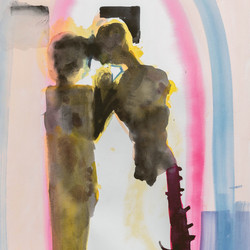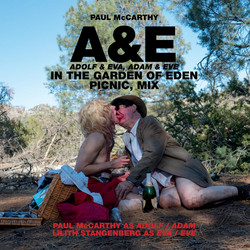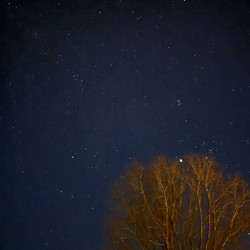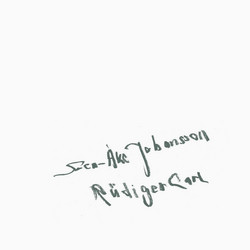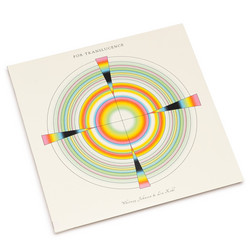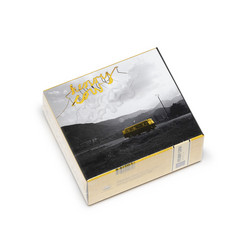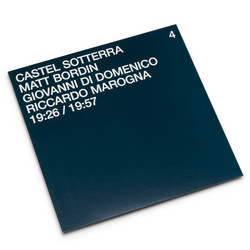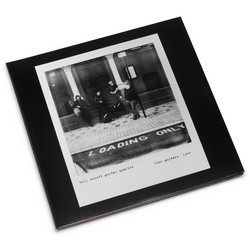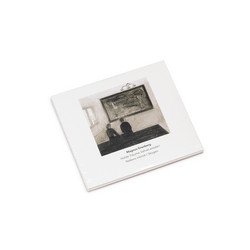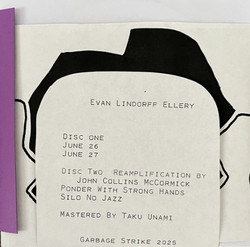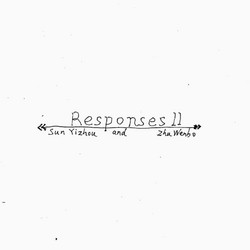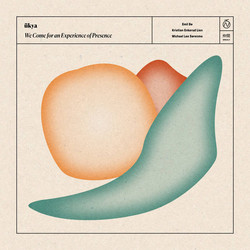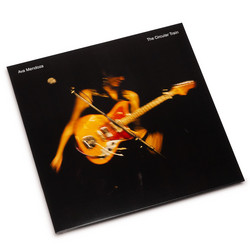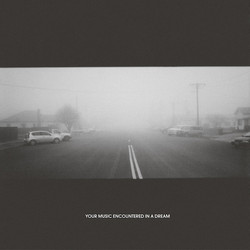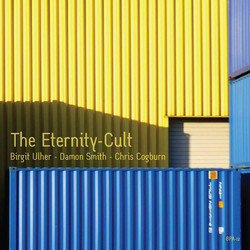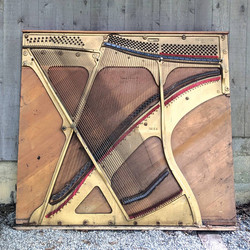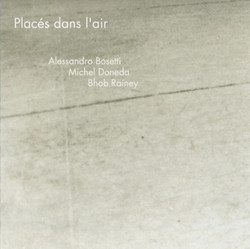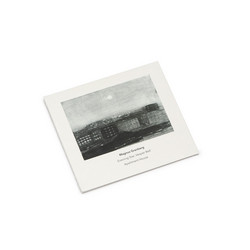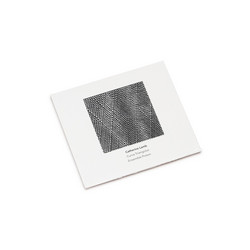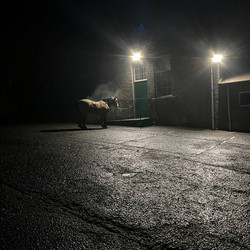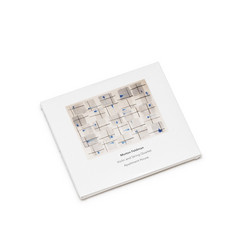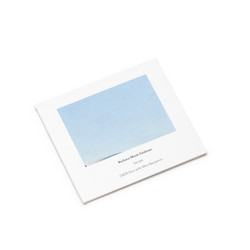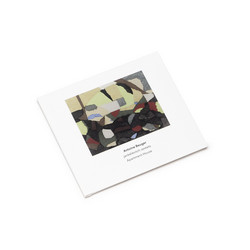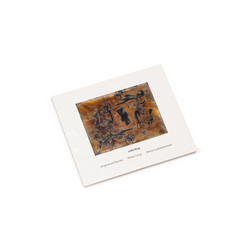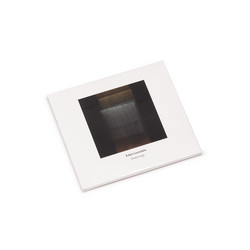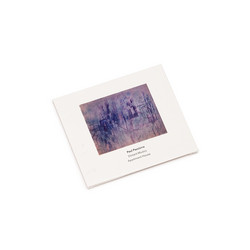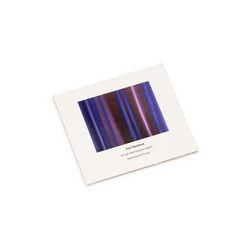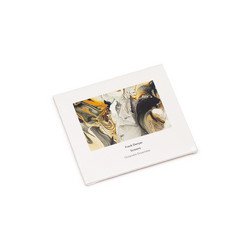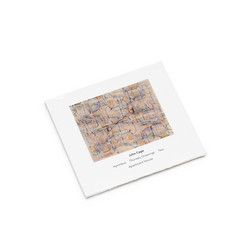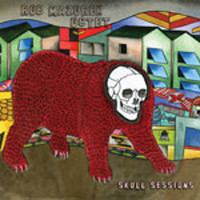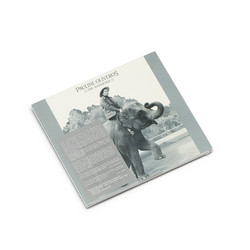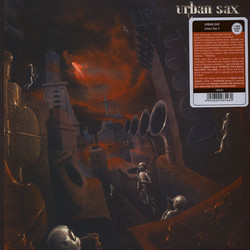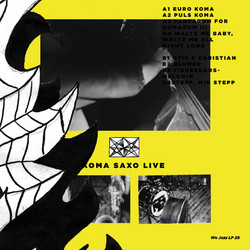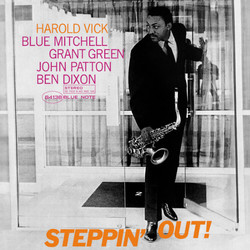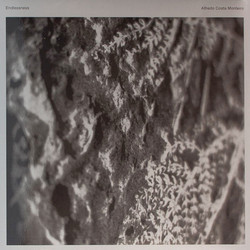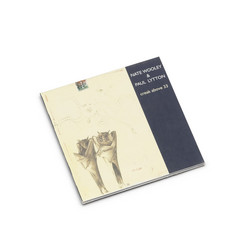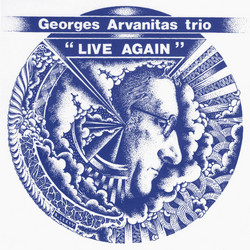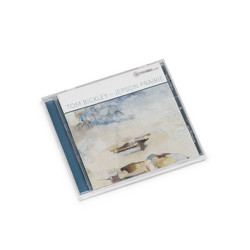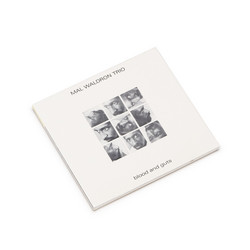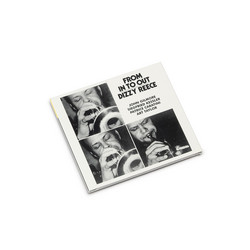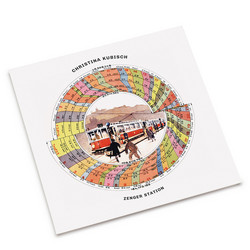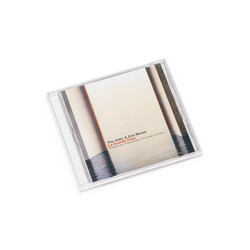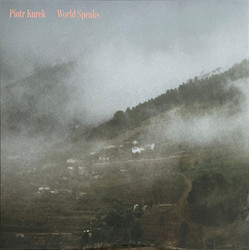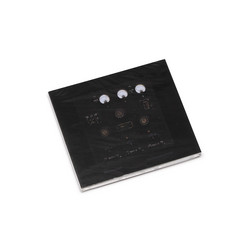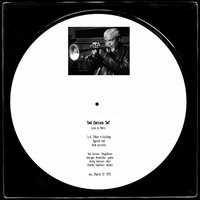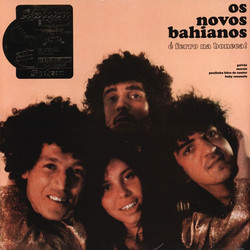Chris Cogburn, Bonnie Jones, Bhob Rainey
Arena Ladridos
Synergies exist within group performance, whereby each individual voice is augmented by another, doubly so in group improvisation. An obvious statement, I know, but what may be less apparent is how this interaction resembles what one might call a nonlinear dynamical system. Here, voices coalesce together into a meshwork, feeding back into one another. This happens either on a purely physical level, where the sounds emitted by each performer interact in harmonic wave patterns; or on a cognitive level, where the decisions of player x influence those of player y (and then y back onto x). The former phenomenon is well-studied - from Bach's counterpoint to Grisey's spectralism, the notion that harmonics behave in a nonlinear fashion has long been entrenched in musical theory - but the latter is a far less understood and applied process, even among social scientists. Fortunately, the group documented by Arena Ladridos are world-class, providing an excellent example of a nonlinear dynamical system.
Frequently brought together through Austin's No Idea Festival, the trio of Chris Cogburn (percussion), Bonnie Jones (electronics), and Bhob Rainey (soprano saxophone) toured Texas and Mexico in 2010. Arena Ladridos is the recorded document of shows in Austin and Marfa, Texas, with each set comprising a 20-plus-minute track. Each member's credentials are unimpeachable, all having played with premier free improvisers. Jones is a Korean-born, Baltimore-based electronic improviser who makes up one half of English (with Joe Foster) and has played with such luminaries as Andrea Neumann and Toshimaru Nakamura. An instructor at Loyola University of New Orleans, Rainey ought to be familiar to most, as one of the principles of nmperign alongside Greg Kelley. The Austin-based Cogburn might be the least well-known, though his background is equally sound - as curator of No Idea Festival and having played with Vic Rawling, Tetuzi Akiyama, and Annette Krebs, among others.
So what then would be the most effective tool for understanding how a nonlinear dynamical system applies to an improvisational work like Arena Ladridos?
That would be the language of such a system's limiting behavior. On the opener "Govalle," for example, the trio quickly settles into what would be called a restrained 'attractor,' i.e., a stable point or cycle at which the variables sort of hover around (up to minor perturbation). For much of the first half of the track, the three are caught in this quiet, yet menacing cycle, aptly evoking the rough translation of Arena Ladridos, 'barking sand.' Jones' drone faintly hisses while Rainey and Cogburn emit sparse sounds of airy notes and delicate scratching, respectively. Just over four minutes in, the group attempt to dislodge the muted aesthetic, with each crescendoing simultaneously. But this perturbation is weak, resulting in a regression back to the original, minimal attractor. It isn't until around 12 minutes that the group breaks free of their initial state: Rainey's sax oscillates wildly while Jones introduces an intrusive feedback more akin to Nakamura's troublesome no-input mixer, thus disturbing their environment enough to evolve the system. As a result, for the remainder of "Govalle," Cogburn, Jones, and Rainey bifurcate rapidly between a loud and soft attractor, until finally the system disintegrates.
"Marfa," on the other hand, evolves in a drifting manner as opposed to bifurcation, proceeding sequentially as soft, loud, soft, loud, etc. Instances of unaccompanied 'lowercase' sax quickly transition into a troika of noise and just as swiftly back into near silence. Each quieter moment resembles "Govalle's" first attractor, but in no way could any be considered a derivative of another. The outbursts too are varied, ranging from a cacophonous flutter to a radiant drone reminiscent of nmperign's best. These basic components of volume comprise sections of drift, each an incremental development from its associated predecessor.
From the listener's perspective, especially the uninitiated, Cogburn, Jones, and Rainey's improvisation might seem chaotic and formless, but the best players always employ some sort of logic, whether that be agreed-upon heuristics or a player's internal theories. This 'logic' is actualized here through their performance and yet subsequently distorted by one another until they reach an obfuscated, bizarre structure: an instantaneous, complex meme. If this group were of the non-idiomatic persuasion, their aim would be to continually destroy these new memes they've established for themselves. But here the trio seeks to evolve in a novel, seemingly unforeseen way, dodging both exogenous idioms and a reliance on any one endogenous meme. This dismantling of attractors may border on the clinical, but Arena Ladridos is an aesthetic delight, an album that invites both overwrought analysis - as I have done here - and passive splendor - which I recommend you experience."-Matthew Horne, Tiny Mix Tapes
Part of Another Timbre's Silence and After series.

